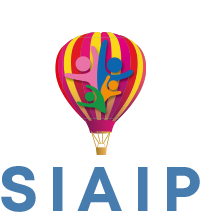Editorial
Issue 2 - 2024
Editorial
Abstract
Dear colleagues,
This issue of our journal – as you know – is entirely in English. From now on, the Italian Society of Pediatric Allergy and Immunology (SIAIP) wants to actively contribute to the international diffusion of pediatric culture in these fields.
Food allergies are characterized by a wide range of symptoms ranging from simple hives to life-threatening anaphylaxis and therefore represent a major burden for both children and adults as well as for costs of the National Health System.
The treatment of severe allergic reactions is and remains adrenaline; for less severe forms, the only approach was to avoid the allergen with rigorous elimination diets. Recently, oral immunotherapy (OIT) has gained recognition as an important alternative, sometimes even leading to definitive resolution of allergies 1.
However, OIT has shown that it is not free of risks: adverse anaphylactic reactions have been recorded very frequently, some of which are life-threatening. Therefore, patients with a severe food allergy, especially those who are allergic to multiple foods, may not benefit from this approach. With the availability of biological drugs, the situation may now be changing. In this issue, Comberiati and Muraro address the problem, asking whether omalizumab therapy could represent a valid alternative and potentially resolving approach to food allergies (p. 34) 2. At the end of the analysis of the international literature, unfortunately they reply that: “a definitive cure for food allergies has not yet been found”. They base this response primarily on the results of the recent phase III, double-blind, randomized, placebo-controlled study by Wood et al. on the use of omalizumab 3. The authors aimed to evaluate the efficacy and safety of omalizumab monotherapy in patients with food allergies to peanuts, cashews, milk, and eggs. It is important to underline that this trial mainly concerns children or adolescents with an average of 7 years and that the youngest was 1 year of age. Therefore, this therapy may also be suitable for very young children.
Following the results of this study, on February 16, 2024, the FDA approved omalizumab for patients with food allergy who should avoid foods to which they are allergic 4. The news was picked up and shared by the entire international press and effectively opens new horizons for these patients, even if it does not resolve the allergy in its entirety.
The considerable advantage obtained with omalizumab in monotherapy concerns the increase in the minimum quantities of the ingestible allergenic food, since this therapy serves to reduce the probability that serious episodes of anaphylaxis may occur due to accidental exposure to the offending food 3. A significant step forward in the management of food allergies and a significant improvement in the quality of life of food-allergic children.
Still on the subject of food allergy, we highlight the article by Anania et al. which addresses the complex interactions between intestinal barrier dysfunctions and food allergies (p. 20) 5. The authors, starting from the hypothesis that intestinal barrier dysfunction is not a consequence but one of the main causes of food allergy, try to identify the “weight” that various factors – food and non-food – could have on barrier dysfunction and therefore on the potential development of food allergy.
They analyze in detail the impact of environmental exposure to specific toxic substances (detergents, microplastics and nanoplastics, food additives such as enzymes and emulsifiers) through the different and complex inflammatory cascades and/or cellular and cytokine reactions.
They list the damages that have been documented on the function and permeability of the intestinal mucosa, and conclude that: 1) none has a dominant role; 2) in many cases the studies are still preliminary and therefore inconclusive; 3) most of the aforementioned stimuli do not act directly, but through modifications of the intestinal microbiota which in the end always turns out to be the most important factor.
From this perspective, the authors underline the importance of diet, particularly in the first months of life, when many foods come into
contact with the intestinal mucosa for the first time. A focus on these aspects was recently given by Scarpone et al. 6. The systematic review and meta-analysis published in JAMA Pediatrics suggests that the early introduction of multiallergenic foods in the first year of life may be associated with a lower risk of developing food allergies. However, the data is affected by the high rate of withdrawal of patients from the early introduction of allergenic foods group. Therefore, research must continue in the hope that better diagnostic and support tools can in the future allow for a more precise knowledge of the mechanisms that regulate the genesis of the allergy and thus develop a therapeutic approach that allows its definitive resolution. Only then will we be able to develop a targeted therapy that allows definitive resolution of food allergy.
References
1 Santos AF, Riggioni C, Agache I, et al. EAACI guidelines on the diagnosis of IgE-mediated food allergy. Allergy 2023;78:3057-3076. https://doi.org/10.1111/all.15902
2 Comberiati P, Muraro A. Omalizumab: a definitive cure for food allergies? Italian Journal of Pediatric Allergy and Immunology 2024;38(02):36-37. https://doi.org/10.53151/2531-3916/2024-473
3 Wood RA, Togias A, Sicherer SH, et al. Omalizumab for the Treatment ofMultiple Food Allergies. N Engl J Med 2024;390:889-899. https://doi.org/10.1056/NEJMoa2312382
4 FDA Approves First Medication to Help Reduce Allergic Reactions to Multiple Foods After Accidental Exposure. https://www.fda.gov/news-events/pressannouncements/fda-approves-first-medication-help-reduce-allergicreactions-multiple-foods-after-accidental (Accessed on: March 19, 2024).
5 Anania C, Cuomo B, D’Auria E, et al. Intestinal barrier dysfunction and food allergy. Italian Journal of Pediatric Allergy and Immunology 2024;38(02):22‑35. https://doi.org/10.53151/2531-3916/2024-352
6 Scarpone R, Kimkool P, Ierodiakonou D, et al Timing of allergenic food introduction and risk of immunoglobulin E-mediated food allergy: a systematic review and meta-analysis. JAMA Pediatr 2023;177:489-497. https://doi.org/10.1001/jamapediatrics.2023.0142
Downloads
License
This work is licensed under a Creative Commons Attribution-NonCommercial-NoDerivatives 4.0 International License.
Copyright
Copyright (c) 2024 Italian Journal of Pediatric Allergy and Immunology
How to Cite
- Abstract viewed - 361 times
- pdf downloaded - 32 times



